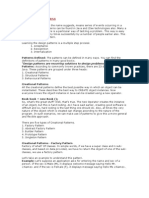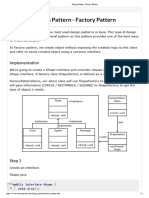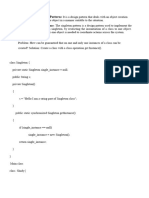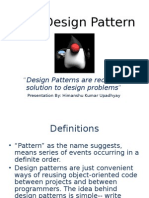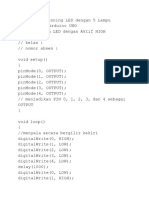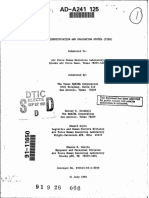0% found this document useful (0 votes)
34 views4 pagesFactory Pattern
The Factory Pattern is a creational design pattern that provides a way to create objects without specifying the exact class of object that will be created. This is done by creating objects through a common interface of a factory class, rather than directly with a constructor. The Factory Pattern allows for new types of products to be added without changing the structure of the client code. It promotes loose coupling between the creation of an object and its use.
Uploaded by
Nourhane IbrahimCopyright
© © All Rights Reserved
We take content rights seriously. If you suspect this is your content, claim it here.
Available Formats
Download as DOCX, PDF, TXT or read online on Scribd
0% found this document useful (0 votes)
34 views4 pagesFactory Pattern
The Factory Pattern is a creational design pattern that provides a way to create objects without specifying the exact class of object that will be created. This is done by creating objects through a common interface of a factory class, rather than directly with a constructor. The Factory Pattern allows for new types of products to be added without changing the structure of the client code. It promotes loose coupling between the creation of an object and its use.
Uploaded by
Nourhane IbrahimCopyright
© © All Rights Reserved
We take content rights seriously. If you suspect this is your content, claim it here.
Available Formats
Download as DOCX, PDF, TXT or read online on Scribd
/ 4








